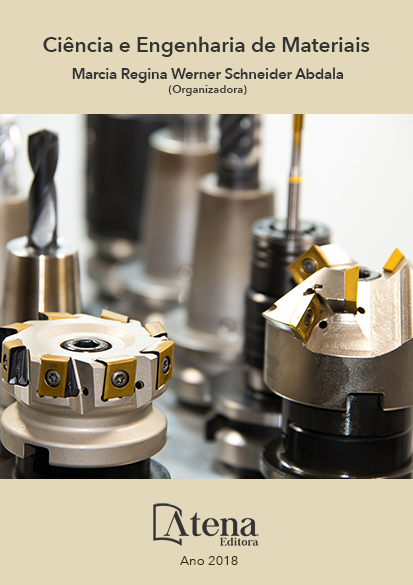
PROCEDIMENTOS NA SIMULAÇÃO MATEMÁTICA PARA DETERMINAÇÃO DE VALORES E MAXIMIZAÇÃO DE PROPRIEDADES MECÂNICAS DE NOVOS MATERIAIS CERÂMICOS
A procura de novos materiais
quando desenvolvidos pelas metodologias
tradicionais, requerem a confecção de elevado
número de corpos de prova, tempo e custos
elevados, vindo por vezes a inviabilizar o novo
produto em desenvolvimento. A disponibilidade
de teorias utilizando simulações matemáticas,
associadas a software, tem sido cada vez mais
aplicada no meio científico e industrial, na
tentativa da obtenção de novos materiais. O
processo geralmente consiste em manipular as
porcentagens dos componentes que formaram
o novo produto, observando as alterações
produzidas em suas correspondentes
propriedades mecânicas. Este trabalho procura
mostrar como se desenvolvem, utilizando um
reduzido número de ensaios, as interconexões
entre os trabalhos laboratoriais, simulação
matemática e software. Nesse desenvolvimento
se utilizam resultados de misturas cerâmicas,
seus diferentes valores obtidos na resistência
à compressão axial, a transposição desses
dados à teoria matemática e a resolução dada
pelo software. O trabalho é desenvolvido
passo a passo, mostrando a possibilidade de
visualização e determinação de uma enorme
gama de valores de acordo com as equações
e superfícies de resposta, triangular e espacial,
permitindo que as propriedades mecânicas em
questão sejam dessecadas dentro das faixas
percentuais usadas na mistura. Da mesma
forma, essa abordagem abre horizontes para a
otimização das porcentagens dos componentes,
na determinação dos valores, que maximizam
a propriedade mecânica estudada. Portanto,
a partir do pequeno número de testes de
laboratório, o estudo é totalmente resumido
em uma simulação matemática, facilitada pela
extrema velocidade que é peculiar no uso de
software.
PROCEDIMENTOS NA SIMULAÇÃO MATEMÁTICA PARA DETERMINAÇÃO DE VALORES E MAXIMIZAÇÃO DE PROPRIEDADES MECÂNICAS DE NOVOS MATERIAIS CERÂMICOS
-
DOI: Atena
-
Palavras-chave: maximização de propriedade mecânica, resistência à compressão, simulação matemática, material cerâmico.
-
Keywords: mechanical property maximization, compressive strength, mathematical simulation, ceramic material.
-
Abstract:
The search for new materials when
developed by the traditional methodologies,
requires the preparation of a high number of
samples, time and high costs, sometimes making
the new product in development unfeasible.
The availability of theories using mathematical
simulations, associated with software, has been
increasingly applied in the scientific and industrial environment, in an attempt to obtain
new materials. The process usually consists in manipulating the percentages of the
components that formed the new product, observing the changes produced in their
corresponding mechanical properties. This work tries to show how the interconnections
between the laboratory works, mathematical simulation and software are developed,
using a small number of laboratory test. In this development the results of ceramic
mixtures, their different values obtained in the resistance to the axial compression,
the transposition of these data to the mathematical theory and the resolution given by
the software are used. The work is developed step by step, showing the possibility of
visualization and determination of a huge range of values according to the triangular
and spatial response equations and surfaces, thus allowing the mechanical properties
in question to be desiccated within the percentage ranges used in the mixture. In the
same way, this approach opens up horizons for the optimization of the percentages
of the components, in the determination of the values, that maximize the mechanical
property studied. Therefore, from the small number of laboratory tests, the study is
fully summarized in a mathematical simulation, facilitated by the extreme speed that is
peculiar in the use of software.
-
Número de páginas: 15
- José Vidal Nardi
- Aline Souza Lopes Ventura Nardi


